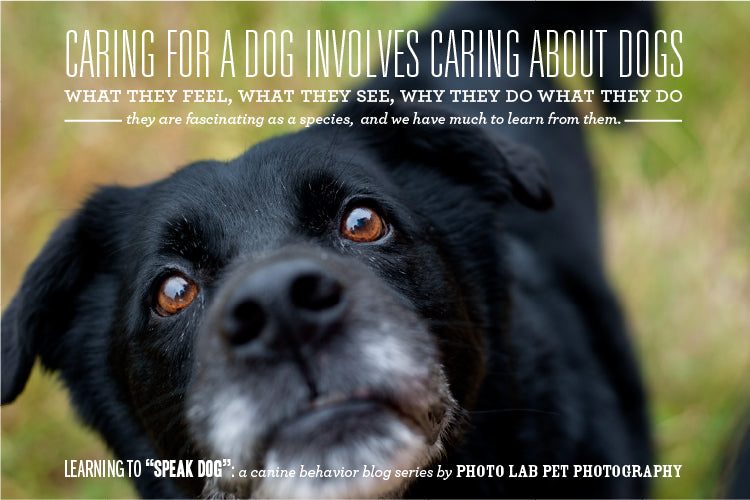The following is a repost from Tails From the Lab - a blog written by our friends over at Photo Lab Pet Photography.
“Living with a dog–trying to understand a dog, to read his or her behavior and emotional state–is such a complex blend of reality and imagination, such a daily mix of hard truths and wild stabs in the dark.” – Pack of Two, Caroline Knapp
It is estimated that 62 percent of all households in the United States have a pet; of those, 78.2 million are dogs and 86.4 million are cats. Approximately 5 million to 7 million companion animals enter animal shelters nationwide every year. But if cats and dogs are the world’s most popular pets, why are so many surrendered to shelters? The possible answers are too many to list here and regardless, the spectrum is too wide and varied to make a generalization. Some people are genuinely heartbroken at having to give up their animals for reasons beyond their control, while with others we are lucky if they even bother to bring them into a shelter at all.
But more and more, a BIG reason behind relinquishing a pet is incompatibility and behavior problems. These behavior problems range from “the dog chews everything in sight” or “this cat is spraying everywhere” to “the dog has lunged and/or bitten people and/or other dogs.”
So, why should you care about understanding canine behavior?
In my eyes, it is this simple: You want a good relationship with a dog? Then proper communication is essential. Gone are the days of a one-sided conversation, not with all the wonderful information available to you. Dogs will not answer back in English or in Lassie-like form (“Lassie! is Timmy hurt?!” “bark! bark!”), but they speak their needs and emotions with their body and behavior, if you just have the patience to observe. Good communication has a way of establishing trust and trust has a wonderful way of weaving a friendship doesn’t it? If you still need another reason why you should care, how about keeping more families together, preventing more dog bites, dog fights and keeping more animals out of shelters, not to mention raising, caring for and training happy, healthy and stable four-legged friends? It all sounds good to me.
Try this:
1) Next time you are conversing with a friend, try to listen like your dog would: Say nothing, just use all your senses and take it all in.
2) Likewise, next time you talk to your dog, use the words you know he is familiar with in a sentence. Speak slowly, softly and emphasize words you know he’ll recognize. What do you see? How does your dog react?
3) Go on a “sniff walk”. Instead of you deciding where you want to walk with your dog, try and let him (or his nose) decide. This will take some patience and time of course, but that is EXACTLY what you’ll need, and LOTS of it. Obviously, don’t let your dog follow his nose into trouble but do try to let him use his nose and stop when he stops. In other words, stop and smell the roses, it’s good for you. For those of you training your dog to walk politely by your side, this might seem like breaking the rules, so here’s what we did with our dog: We have a “polite walk time” and a “sniff walk time”. I tend to do the sniff walk first because Corbin is older and needs to check his pee-mail before engaging in anything else. After a short “sniff walk”, he is more than happy to do his “polite walk”. For younger dogs that are just starting to learn, sniffing is rewarding! So use it to your advantage in training: let’s walk politely for a few minutes and use a release word like “go sniff” to reward the polite walk.
To read the full post, visit Tails from the Lab.






